List of Authors
>>About this blog
Recent blog post
|
[CAM]
September 26, 2017 16:00
One of the guidebooks available by foreign tourists is the Lonely Planet series.
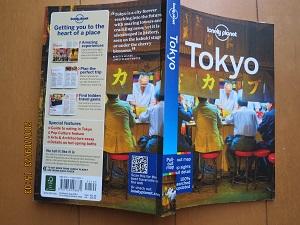
Looking at how Nihonbashi is explained in this guidebook (10th edition-Aug 2015), "Ningyocho" is described as follows.
NINGYOCHO
East of Nihombashi, towards the Sumida-gawa, is Ningyocho, a shitamachi (old downtown Tokyo) area well worth exploring for its small temples, shrines, craft shops, food stalls, and atmospheric places to eat and drink. Ningyo means doll - these and puppets were once made here when Ningyocho was a hub for the performance arts. Kabuki is still performed at Meiji-za (Meijiza; 2-31-1 Nihonbashi-Hamacho) theater.
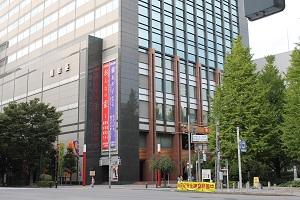
and you can see the dolls and puppets of Jusaburo Tsujimura at Jusaburo-kan (Jusaburo-kan; 3-6-9 Nihonbashi-Ningyocho).
However, this "Jusaburokan" was "The atelier in Ningyocho, Tokyo, has been closed to the public on September 12, 2015. We are continuing to exhibit at [Tsujimura Jusaburo Ningyokan] in Miyoshi City, Hiroshima Prefecture, so thank you very much. "
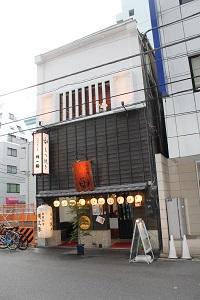
Zone in Amazake Yokocho (amazake Yokocho) a pleasant shopping street with age-old businesses and named after the sweet, milky sake drink amazake; you can sample it at Futaba (Futaba; 2-4-9 Nihonbashi-Ningyocho), along with various sweet and savoury eats made from tofu.
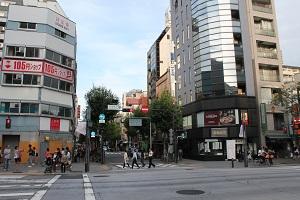
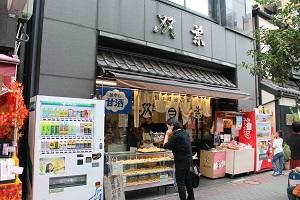
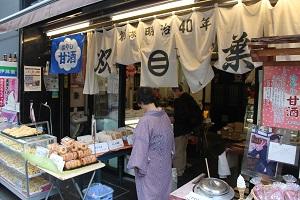
Also along here is colorful crafts shop Yuma (Yuma; 2-32-5 Nihonbashi-Ningyocho).
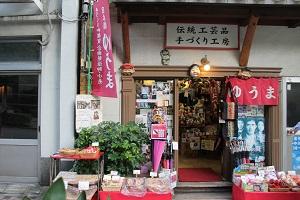
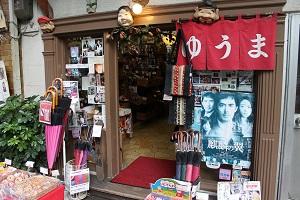
West across NIngyocho-dori from Amazake Yokocho, you'll easily spot Tamahide (Tamahide; 1-17-1 Nihonbashi-Ningyocho) by the line of customers waiting for a space inside the restaurant where they are up their signature oyakodon (dry cooked in a sweet sauce with eggs and served over a bowl of rice) since 1760.
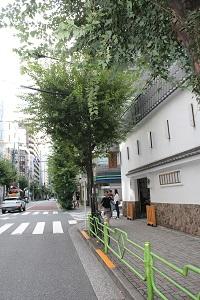
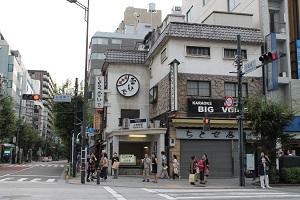
A few blocks northeast from Amazake Yokocho, facing a neighbouring park, is Brozer' s Hamburger (2-28-5 Nihonbashi-Ningyocho), one of Tokyo's best burger joints.
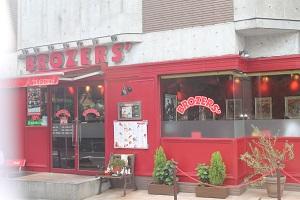
[CAM]
September 19, 2017 09:00
Junichirou Tanizaki's "Childhood" is quoted on the bulletin board of "Armi Bridge". Before and after this quoted part, the surrounding landscape is well described.
The armor bridge was built in 1872 (1872). In 1888 (1888), it was replaced by a steel truss bridge, and a streetcar ran on the bridge from the Taisho era to the Showa era. In 1957 (1957), it was replaced with the current one ("Monoshiri Encyclopedia"). Since "Kids" was serialized in the magazine "Bungei Shunju" from April 1955 (April 1955) to March of the following year, it is said that "Aromi Bridge has been aging and removed." It may be before this replacement.
The Tanizaki family moved to Hamacho for a short period of time and moved to Minami Kayabacho.
The explanation version of the armor bridge that quotes "Kids"
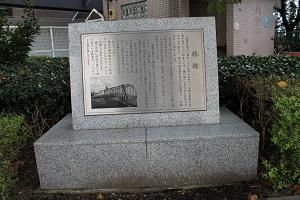
I was only a few months in Hamacho's house, and it seems that I had moved to 45 Minami Kayabacho by the fall of 1891. ・・・・・
・・・ ・ I was told when I was a child, saying, "Armor Bridge used to be a handover of armor, and there was no bridge in Asoko," but now a bridge called Kayaba Bridge was built downstream. It is said that the armor bridge was old and removed, so it was returned to the old days when I was not born.
When you come from Koamicho and cross the original armor bridge, there is a Kabuto-cho stock exchange on the right, but the first street on the left is Omote Kayabacho, and the next street in parallel with it is Ura Kayabacho. Was called. ・・・・・・・
Even after coming to Kayabacho, I was always taken by my mother and grandmother to go to the home almost every day. The distance was about the same as the time of Hamacho, about five or six. From Ura Kayabacho, go out Katsumi's Yokocho to Omote Kayabacho, cross the armor bridge, turn left toward Koamicho, and turn right right again to pass through Komeyacho. It was a time when I and my grandmother's legs were about fifteen minutes, and there were no trains or cars, but when I crossed the armor bridge, I had to cross the humanitarian side facing the wide traffic, so I was careful not to be hit by a rickshaw. At that time, the bridge was one step higher than the road surface and had a slope, so the rickshaw running down from the bridge could not stop suddenly due to inertia, which could be unexpectedly dangerous. Armor Bridge is one of the few railway bridges in the city at that time, and I think Shinohashi and Eitai Bridge were still old wooden bridges. I always stopped in the middle of the bridge and looked at the flow of water in the Nihonbashi River, but when I pressed my face on the iron railing and looked at the surface of the water coming under the bridge, it seemed that the bridge would move instead of the water flowing. I also crossed from Kayabacho, and always looked at a building like a fairy tale of Shibusawa's house on the shore of Kabuto-cho upstream with a mysterious feeling. The Nissho Building is now built here, but it was originally a Venice-style corridor and a Gothic Hall of Fame with pillars facing the water, in close contact with the stone cliffs, on the edge of the river. Who was the idea of building such a foreign classical hobby mansion in the middle of Tokyo in the middle of the Meiji era? On the banks of Koamicho on the opposite bank, there are many white walls of the storehouses lined up, and if you turn a little off that nose, it will be Edobashi and Nihonbashi immediately, but only that one section is away from Japan like a stone-plated West landscape painting. However, it was strange that it was not necessarily inconsistent with the surrounding water city, and that the cargo boats, horse-drawn boats, and daruma boats that came up in the previous flow were in harmony like a gondola. ("The first house in Minami Kayabacho"; 73)
We lived at the house in Hama-cho for only a few months, moving to No.45, Minami Kayaba-cho, sometime before the autumn of 1891. ・・・・・・
I remember being told as a child that there had been a ferry-crossing where Yoroibashi bridge then was; now the bridge is gone again, torn down because of dilapidation and replaced with the new Kayababashi bridge further downstream. Thus in a sense we have come full circle, back to what things were like in the old days, before I was born.
Coming from the direction of Koami-cho, at the point where the old Yoroibashi bridge crossed the river, you saw the Kabuto-cho stock exchange on the right. The first road to the left was called Kayaba-cho 'Front Street', while the next, paralleled to it, was 'Back Street'. ・・・・・
Even after the move to Minami Kayaba-cho, I still went almost daily to visit the main house with Mother and Granny. The distance was no more than it had been when we were in Hama-cho ―some five or six blocks. We passed from 'Back' to 'Front' Kayaba-cho vis the Katsumi side street; crossed Yoroibashi bridge and turned left toward Koami-cho; then turned right and passed thorough the rice dealers' district. It took only fifteen
minutes, even for Granny and me. There were as yet no streetcars or automobiles about, but Granny always warned me to be careful not to be hit by a rickshaw as I crossed the wide road beyond Yoroibashi bridge to get to the pavement on the other side.
The bridge was at that time raised somewhat higher than the surface of the road, and sloped down to meet it; and the rikishaws that sped down the slope often found it impossible to make sudden stops, so it could be quite dangerous. Yoroibashi was one of the not-so-numerous steel bridges then in Tokyo, while Shin Ohashi and Eitaibashi bridges were still made of wood. I used to stand in the middle of it and watch the flow of the Nihombashi River. As I pressed my face against the iron railings and gazed down at the surface of the water, it seemed as if it were the bridge and not the river that was moving.
Crossing the bridge from Kayaba-cho, one could see the fantastic Shibusawa mansion rising like a fairly-tale palace on the banks of Kabutocho, further upstream. There, where the Nissho Building now stands, the Gothic-style mansion with its Venetian galleries and pillars stood facing the river, its walls rising from the stony cliff of the small promontory on which it had been built. Whose idea was it, I wonder, to construct such an exotically traditional Western-style residence right in the middle of late nineteenth-century Tokyo? I never tired of gazing at its romantic outlines with a kind of rapture. Across the river on the Koami-cho embankment were lined the white walls of innumerable storehouses. Though the Edobashi and Nihombashi bridges stood just beyond the promontory, this little section of Sitamachi had a foreign air, like some scenic lithograph of Europe. Yet it did not clash with the river and surrounding buildings-in fact, the various old-fashioned barges and lighters that moved up and down the stream past the 'palace' were strangely in harmony with it, like gondolas moving on a Venetian canal・・・ (54)
Explanatory version of the armor handover, the ferry port survived until the armor bridge was built in 1872 (1872). ("Monoshiri Encyclopedia"; 25)
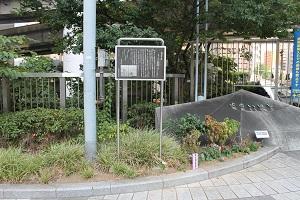
View Kayaba Bridge from Armor Hashigami. In the past, the area around Minamizume of this bridge was called the Kayaba Riverside, and was a place where the Kaya was cut and piled up. Like the origin of today's Kayabacho, the name of the bridge is also derived from this. The current bridge was replaced in 1992 (1992) due to the aging of the old bridge ("Monoshiri Encyclopedia", 25).
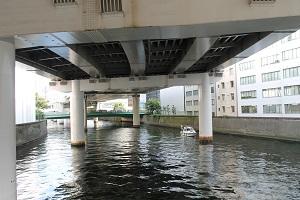
View the stock exchange from Nihonbashikoamicho over the armor bridge
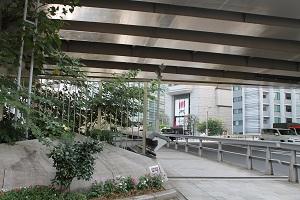
In the foreground is the Nisshokan Building, the trees ahead are Kabuto Shrine, and the skyscraper is the Nihonbashi Diamond Building.
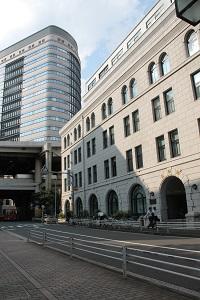
[CAM]
September 16, 2017 12:00
The Nihon Keizai Shimbun, dated September 13, reported "Yasuda Real Estate, redevelopment of Nihonbashihamacho."
According to this article, we plan to build new hotels and condominiums in Nihonbashihamacho, and have already opened an exchange base that can be used by tenant companies and local residents in neighboring offices.
The hotel will be built by Yasuda Real Estate and is scheduled to open in February 2007. It is 15 stories above the ground and has about 170 guest rooms. It is expected to be used mainly by tourists. Part of the building is planned to be a rental apartment (108 units).
As an exchange base, "Hama House" opened on the 9th. This means that the first floor is a bookstore and cafe, the second floor is a meeting room for tenants and local residents in nearby office buildings, and the third floor is a small office where creators gather. Next to Hama House, an exchange base "Hama 1961", which has been renovated from an existing building, opened on the same day. On the first floor, a French stationery store "Papietigel" will be invited to set up a food and drink space for Japanese tea. The second floor was a designer's office.
I went to see it right away. As an impression, the impression that the already opened "Hama House" was somewhat small compared to what was expected in newspaper reports.
Hama House, which opened on the 9th.
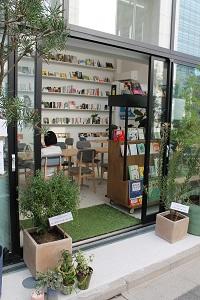
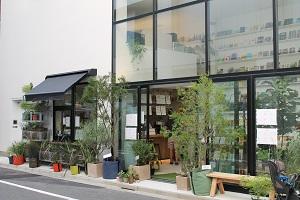
Nihonbashihamacho has already accumulated office buildings such as Tornale Nihonbashihamacho, Nihonbashihamacho F Tower, and Nihonbashi Yasuda Skygate, which were developed by Yasuda Real Estate, and Meijiza and Sumo Room (Arashio Room) have become popular spots for foreign tourists.
Tornale Nihonbashihamacho
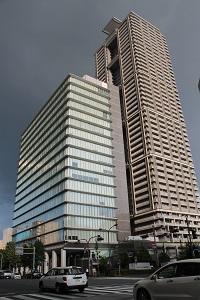
Yasuda Real Estate seems to have a plan to expand functions such as accommodation, residence, and exchange in addition to offices and commercial facilities, and to attract more residents and tourists, so I would like to look forward to future development.
[CAM]
September 15, 2017 18:00
Chuo Ward Local Tenmonkan October 2015 “Literature Sampo Junichirou Tanizaki“ Walking in Childhood ””
With reference to Iwanami Bunko's version of "Kids" and English translation (for Paul McCarthy), I would like to trace the scene centered on Nihonbashi that Tanizaki drew again.
Junichirou Tanizaki (1886-1965) wrote "Kids" in April 1955 (1955) when Tanizaki was 69 years old, and was serialized in the magazine "Bungei Shunju" until March of the following year. It is an essay that depicts childhood playgrounds, shops, schools, and memories of friends in the middle to late Meiji era. Tanizaki says about this book, "The purpose is to have young people know and leave the scenery of downtown in Tokyo, which has now changed so much." (About my childhood).
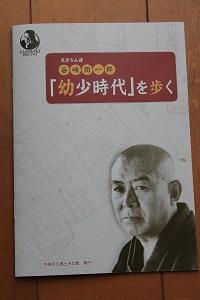
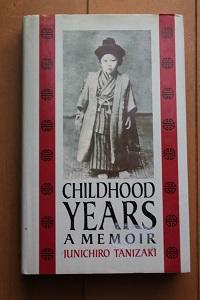
My grandfather ... I set up a house in Ginza at 2-14, Oyster shell-cho, Nihonbashi, and started a print printing business. I was born in the Kurazashiki of a black plastered storehouse, which had a signboard of Ichiroku Iwaya's slave book called "Tanizaki Katsubunsho". ・・ ・ ・ ・ ・ ・ If you go straight in front of the print shop and go to the street of 1-chome, it is the so-called "Komeyacho" at that time, and there are rice brokers on both sides, mainly on the rice exchange. Was lined up. ・・ ・ ・ ・ ・ ・ ・ Outside of that, near the back street of Ginkgo Yahata, which still remains on Armorbashi Street, a branch of an active plate was set up and a signboard called "Tanizaki Branch". ・... My grandfather, Hisaemon, was two or three years old, for the Goro Kura and his wife, Nihonbashi Aomonocho (the name of this town is not present, but the street of the shipping bridge and Showa-dori crossed. Around the point where I set up Ichinohe to run a Western liquor business, and then I went to a lighting company in Yanagihara, but none of them died and their management was skillfully skillfully. ("My oldest memory")
Grandfather then built a house at No.14, Kakigara-cho 2-chome, Nihombashi, where the
Ginza, or Silver Mint area, had formerly been. And there he set up a print shop ― the Tanizaki printers; it was in the parlor of this traditional godown-style building, with its signboard carefully inscribed in formal characters by a well-known calligrapher, that I was born. ・・・・・・・ Walking from the print shop toward Kakigara-cho 1 -chome, one passed through the rice merchants' district, with dealers' shops lining the road on either side. ・・・・・・・ In addition, there was a branch office of the printer's in the lane behind the Icho Hachiman Shrine, still to be found on Yoroibashi Strret. ・・・・・・・ When I was still a baby, Grandfather set them up in a liquor business, followed later by the lamp-lighting job in Yanagihara.
The display version and explanation version of "Junichirou Tanizaki's Birthplace" written by Mrs. Matsuko displayed on the birthplace (1-7-10 Nihonbashi Ningyocho).
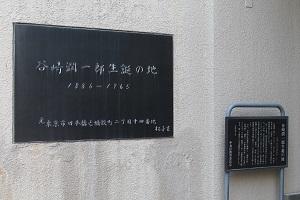
Explanatory version showing the Kakigara Ginza ruins, installed on the sidewalk at the exit of Ningyocho Station A2 on the Tokyo Metro Hibiya Line (1-17-7 Nihonbashi Ningyocho). Since there is no figure in this, I can't grasp the size, but the nearby construction fence had a map along with the explanation of Kakigara Ginza, so it is clear that Tanizaki's birthplace was on this site .
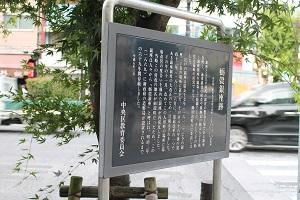
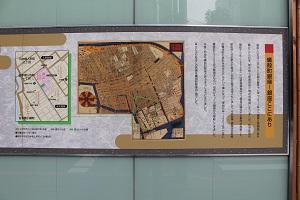
Ginkgo Yahata (1-7-7 Kakigaracho, Nihonbashi)
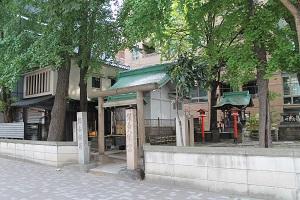
[CAM]
September 6, 2017 18:00
3. What is "Edokko"?
(1) The definition of "Edokko" by Kyoden Santo
The definition of "Edo kid" is famous according to Kyoden Santo (1761-1816), and "I saw the killer whale of Edo Castle and made tap water as a hot spring," "I don't have any money for evening," "Food and play tools are luxury," "Edo's Haenuki," and "Iki and Hari are satisfied with the real estate." The original text of Kyoden Santo's "Community Somagaki" is as follows (Iwanami Shoten, 1958, Vol. 59 of the Nihon Classical Literature, Vol. 59, "Yellow Cover Stylish Book," Iwanami Shoten, 1958).
"Look at the golden fish tiger (Shachihoko), bathe the tap water in a hot spring, grow up at the knee, eat the rice of Ogamizuki, and eat the nanny parasol (Onba Hikarakasa) In the long (person), the gold and silver Sasago Hajiki, and Mutsuyama Mochi no Yamaku. The water of the corner is also in the middle of the water, and the Daimon hits the corner mansion in Honmachi. From the root bone of Edokko (Kojiya Bone), the middle of the Japanese chopsticks that spans all things, if you look at it, you will be able to enter the Shinkaze and the new road of Isecho (Isete), enter the service population, and enter the public population.・ ・ Alan's hae planting is always available on the black lattice.
When I first read these Edokko conditions, I noticed that the part of "bathing tap water in hot water" was stopped, and I wondered why "water supply" became the requirement of "Edokko". Was. In this regard, if you read Kafu Nagai's essay "Water of Well" (1876), you can understand the background well.
"It is a place for people to know that the water supply was called clean water in the Edo period, and that it was opened far away in the Meiryaku era. It is not surprising that there were two streams of Kanda and Senkawa in addition to Tamagawa in water supply. When I was a child, people around Otowa and Kohinata remember using Kanda Josui from the Edo period as it is. At the same time, in order to use the water supply at that time, he dug a well into a gutter where the water supply flowed, and pumped water in a bell tub attached to the tip of a bamboo pole.
Once upon a time in Edo, Josui had only flowed through the busy towns of Kyobashi, Ryogoku, and Kanda, and on the remote mountainside, even in places where it was in the passages of Josui, near Yotsuya and Sekiguchi, could not use it in a flood. Therefore, if you say that you are a man who uses hot water from tap water, you will be born in the busiest downtown area in Edo, and if you are not Kanda Myojin, you will be Sanno's shrine parishioner, so it is a place where you are proud of Edo Tsuko. (A long time ago, it was said that those who lived around Koishikawa, Ushigome, and around Akasaka Azabu will go to Edo when they go to downtown. ) "(Iwanami Edition Complete Works 17-32)
(2) Consideration of the creation of "Edokko"
According to Kafu Nagai's text above, even at the beginning of the Meiji era, "Those who lived around Koishikawa, Ushigome, and Akasaka Azabu said that they would go to Edo when they went to downtown." I understand. It is often said that "Edo kid born in Shiba and raised in Kanda", but as already mentioned, Kanda and even Shiba were not originally included in the area called "Edo". .
Mr. Yasaburo Ikeda explains as follows. ("Nihonbashi Private Note")
"Historically, if the Edo kid was born in the town of Edo under the knee of the general, the people in the former Nihonbashi and Kyobashi wards of Chuo-ku now form the center. In the very old days, both Kanda and Shiba were not Edo. Of course, Asakusa is also outside Edo. However, with the times, those who were born in Shiba and grew up in Kanda have also become Edokko, and the headquarters Fukagawa facing the river has entered Edo. "
And then
"Even if you preach the temperament about money, when targeting people who belong to the class of merchants, mainly in Honmachi in Edo, you must find the temperament of those who have stored dignifiedly, rather than not using the money of the evening. . It is dangerous to bring out the temperament from Edokko, a concept that appears in the world of lectures and rakugo. "
Regarding "Edokko", the book "Edokko" (Kikkawa Hirofumikan, 1980) is dedicated to the details, but Makoto Takeuchi's explanation in "Heibonsha Dai Encyclopedia" is simple and easy to understand. According to this, (quotation is based on DVD-ROM 1998 version).
"The word Edokko only appeared in the late 18th century in the Tanuma period (1760-86). (Note by the author; Kyoden Santo is 1761-1816) ... There are two possible opportunities. One is that during this period, economic fluctuations were intense, and among Edo townspeople, there was a remarkable change between those who were rich and those who fell and became poor. Probably, it can be said that the Edokko consciousness was established as the basis of the crisis awareness of the falling Edo townspeople = mental support. "
"In the Tanuma era, the upper large merchants with branches in Edo made a great deal of money and took control of the Edo business community, especially for Edo townspeople who were falling economically, the opposition to the "upper" was great. ・・ ・ ・ ・ ・ ・ It seems to be an overturning strength of economic inferiority against the superior who is good at money. "
"Another opportunity is that the poor farmers who could no longer eat in rural areas flowed into Edo more than ever before at this time. As a result, many people were born in the country in Edo. Moreover, the strong awareness of the birth of Edo-born "Michichi" grew in response to these "country people" taking advantage of the first Edo-style. "
Nishiyama says, "Edokko is not a specific entity that has a simple structure with a simple hierarchy, but has a double structure," and says, "Ora Edokko, who has been born mainly after the Kasei period, Edokko" (self-proclaimed Edokko), "The great husbands on the fish banks of Nihonbashi, the bills of Kuramae, and the bills of Shinkawa, and the merchants of the Edo town.
As a Kansai person, I felt a physiological disgust of the word "Edo kid" or race, and by Seiryo Kaiho (1755-1817), "Edo things are children's nasty, stupid, It's a culture that has sympathized and agrees with the theory of "Edo, the first time that should not be understood."
(end)
[CAM]
September 5, 2017 18:00
2. The origin and scope of Edo
In this way, as I touched on the history of the current Chuo-ku from the Nihonbashi area, I came to know the origins of Edo, which had been unstudy until now. Nihonbashi-ku and Kyobashi-ku, the predecessors of the current Chuo-ku, Tokyo, were officially established and established in 1878 (1878), but according to the "Slow Records on Department Revision" created just before that, there is no name for Nihonbashi-ku or Kyobashi-ku, and there are names for Beijiang To-ku and Minamiedo-ku. In other words, the original drafter thought of the area of Nihonbashi and Kyobashi as "Edo", divided it into north and south, and tried to call it Beijiang To-ku and Minamiedo-ku. "Chuo-ku History" draws the literature ("Re-school Edo Sunako" and "Edo Oko Illustration") that "I used to border Kanda moat, south to Edo and north to Kanda". It can be seen that the idea existed even in 1878. It is said that when Chuo-ku was established (1947), the idea of setting the new ward name to "Edo-ku" or "Oedo-ku" was also influential.
In the first place, isn't it appropriate to think that the etymology of "Edo" is "Edo"? "E" is the waters that go in from the shore and are great for sailing. The flat land in the eastern part in front of Ieyasu's "Edo Ouchiri" (1590: 1590), everywhere is "Ashihara with Shio", and by the large civil engineering work to fill it, the town in front of the castle, which should be called "Edo". About the town was completed. Later, in 1593 (1593), the Hibiya Inlet was buried, and the houses scattered there were moved south of Shibakuchi. Furthermore, in 1603 (1603), the land on the right bank of the Sumida River seems to have been completed from Hamacho to around Shimbashi due to a large construction called "the construction of Toshima Suzaki". With this construction, the digging of the downtown area was shaped, and the Nihonbashi River, Kyobashi River, Shin-Hashikawa, and Nihonbashi, which had a renewed face, seemed to have been completed at this time. In addition, after the great fire in 1657 (1657), the coast of Kibiki-cho was filled, and at this time the Tsukiji area was completed, and the former Nihonbashi-ku and Kyobashi-ku were completed.
Therefore, the area called "Edo" was limited to Kandabori (Ryukangawa) in the north, and the border to the south was Shin-Hashikawa. The Nanba Bridge over this Shin-Hashikawa was a place for those who were expelled from Edo. Then, when I crossed Shin-Hashikawa and went to Shiba, there was the head office of Kane Kosukemoto. In addition, Kobashi, located near Hongo, was also a "parting bridge" that expelled sinners who paid in Edo, but near the parting bridge in Hongo, there was also a branch of Kaneyasu. According to Yasaburo Ikeda, Kawayanagi, "Hongo is in Edo until Kaneyasu", is based on the fact that there is Kaneyasu near any of the "Farewell Bridges" north and south of Edo, as described above, and says that "Hongo Mo" means that ("Nihonbashi Private Note" 1972). Certainly, by solving like Mr. Ikeda, the particle "mo" seems to come alive. And if you understand that, you can well understand the idea that the area called "Edo" is originally limited to Kandabori (Ryukangawa) in the north and Shin-Hashikawa (Shiodomegawa) in the south." .
Yasaburo Ikeda said, "Probably, before the downtown area of Edo became a more proud, castle knee, Edo castle town, Shiroshita town before it became the name of down town that confronts the mountains. Must have been. It must have been the birthplace of Edo and Edo towns in Edo, such as Honmachi and Tooricho, as a castle town. The words such as Shiroshita and the castle have a unique pride. ・・・・・・・・・
It is the town where the castle was built in Edo. So the beginning was that the downtown area of Edo was a small area, and the head office, Fukagawa, beyond Okawa, was still sea or marshland, not a town, and Kanda arrived in Asakusa, along with Edo, but it was only a district in temple town in Kannon, like Ichijuku Station. It is long later that Kanda, Asakusa, Shitaya, and Honjo and Fukagawa will become downtown ... "("Nihonbashi Private Note").
It was in 1818 (1818) that the Shogunate's official view on the "range of Edo" (jurisdiction of shrines and shrines) and "sumibiki" (jurisdiction of town magistrate) were presented. It has been almost 230 years since Ieyasu entered the prefecture. When discussing the "range of Edo", it is necessary to specify when and at what stage the story is. However, there are sentences that describe the social situation in the late Edo period as a whole, describe the realm of Zhuhiki as a natural premise, and describe the social situation in the latter half of the Edo period as a whole. The Tokugawa shogunate was established (1603) and reigned (1867). This is longer than the period from the United States Declaration of Independence (1776) to the present (240 years).
(Continued)
|
Links
|

